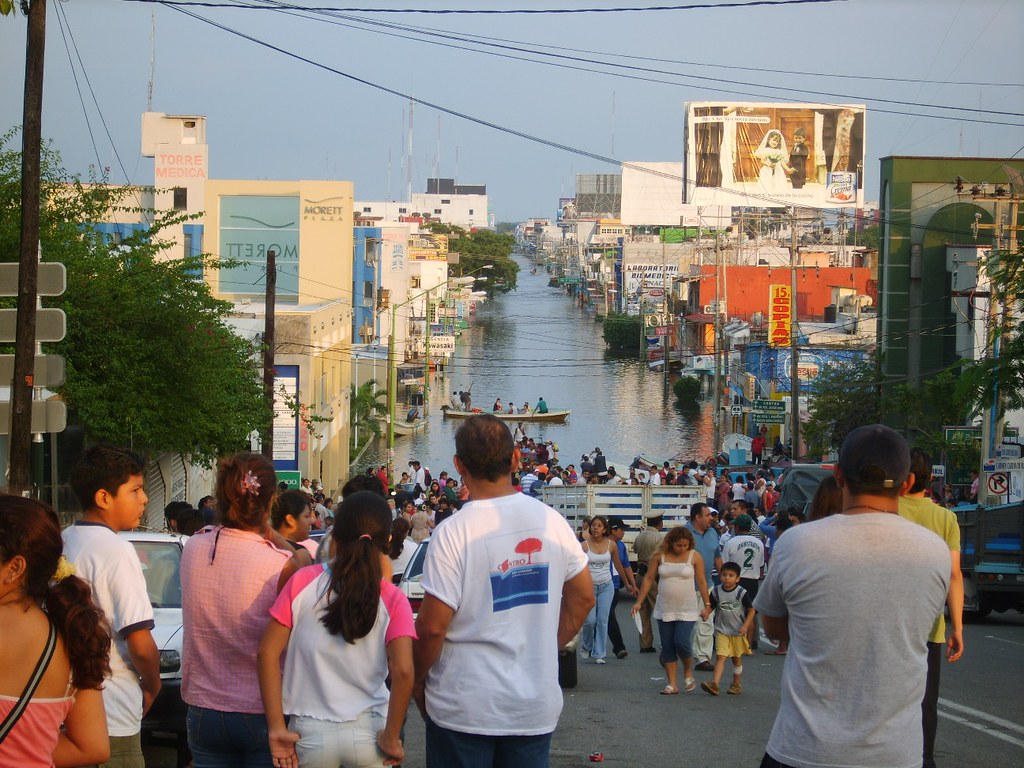How can we prepare for a future of unpredictable water crises?
Preparing for tomorrow’s extremes and building unpredictability into our plans is essential to provide water security in an uncertain world, suggests a new report.
D
rop cap Water is at the heart of the climate crisis. Nine out of 10 natural disasters are water-related and the World Bank estimates that, by 2050, global flood damage will cost the US alone $1 trillion a year. Meanwhile, by 2025, half of the world’s population will be living in water-stressed areas.
As the world’s population grows to a predicted 9.8 billion by 2050, even more demand will be placed on our planet’s natural resources. Rapid urbanization will exacerbate the effects of climate change. Meanwhile, newly built dams are devastating rivers and coastal cities are depleting their natural water supplies, while watching their coastlines retract and sea levels rise.
“Our choices around climate change and water issues are often framed as prevention versus repair. This distinction is false; both are essential,” says Henk Ovink, Special Envoy for International Water Affairs for the Kingdom of the Netherlands and Sherpa for the United Nations World Bank High Level Panel on Water, in the Wellspring Source Water Resilience and Climate Adaptation report by the Global Water Partnership, The Nature Conservancy and AGWa.
“Clearly, we must slow the rate of negative impacts: to cut greenhouse gas emissions and to make efficient, wise, and careful use of our planet and all its resources. Yet at the same time, we need to prepare boldly, comprehensibly, and inclusively for tomorrow’s extremes. Alternating between not responding to clear threats or reacting only after crises have occurred must be reversed to promote proactive, innovative, and transformative climate action.”
Gray vs green infrastructure
Too much focus is placed on repairing damage caused by previous disasters, on building dams, reservoirs and laying pipes, “gray infrastructure”, rather than prevention, adaptation and resilience in relation to the effects of climate change on water security, the report suggests.
Nature-based solutions, such as creating wetlands, protecting a forest upstream or restoring a watershed are a desirable alternative. These are more flexible and adaptive than traditional water infrastructure, so can help secure water for communities even as the climate around them changes.
Activities including reforestation and soil conservation can help lessen the risk of droughts, for example. In the San Juan River basin in Mexico, ground water retention following storms has improved and water runoff has been reduced through these steps. This means the city of Monterrey, which it supplies, has a steadier source of water during droughts. According to the report, one in six cities would be able to pay for natural solutions with the money saved on water treatment.

Source: The impact of flash floods in Mexico. Photo by Huitzil/Creative Commons
Paragraph before heading Restoring the landscapes and natural systems that provide and regulate source water – the provider of reliable and high-quality water for drinking, cooking, irrigation, livestock, energy production and more – as part of source water management is also critical to the future of water security, the report suggests.
Setting up a water fund, where downstream water users, such as cities and utilities, invest in upstream land management, could help govern and finance these efforts. In the Southwestern US, for example, the destruction caused by wildfires aggravates flooding from the monsoon rains that typically follow, while ash and sediment washed into the Rio Grande threatens the freshwater supply. To help the area adapt to climate change, the Rio Grande Water Fund, which has more than 70 partners, aims to reduce the risk of wildfires in the area through reforestation and stream restoration that takes fire risk into consideration.Paragraph before heading
New models
The future is uncertain, so water management and security measures need to include robust and flexible solutions to truly help us adapt to climate change, says the report. Robust for when we are confident of a trend or outcome and can pursue one solution; flexible for issues where there is residual uncertainty. This combination can help us move away from a “predict-then-act” approach by embracing the difficulty of predicting or modelling all climate change outcomes.

Flooding in New Orleans following Hurricane Katrina in 2005. Image: US Air Force
A bottom-up approach to protecting our water sources and systems, one which analyses risk by directly involving stakeholders and decision-makers, both upstream and downstream, early on in the project, could be more able to cope with climate uncertainties. Traditional top-down models often fail to consider the system in question when assessing the risks, the report suggests.
As the report highlights, bringing the wider landscape and ecosystems into water management, building solutions that use both green and hybrid infrastructure but are flexible or robust when required, and involving communities, governments and businesses in decision-making, financing and action; all are steps that can expand our understanding of water management, resources and solutions to insecurity, helping us navigate and adapt to an inevitably uncertain future.
The ideas presented in this article aim to inspire adaptation action – they are the views of the author and do not necessarily reflect those of the Global Center on Adaptation.